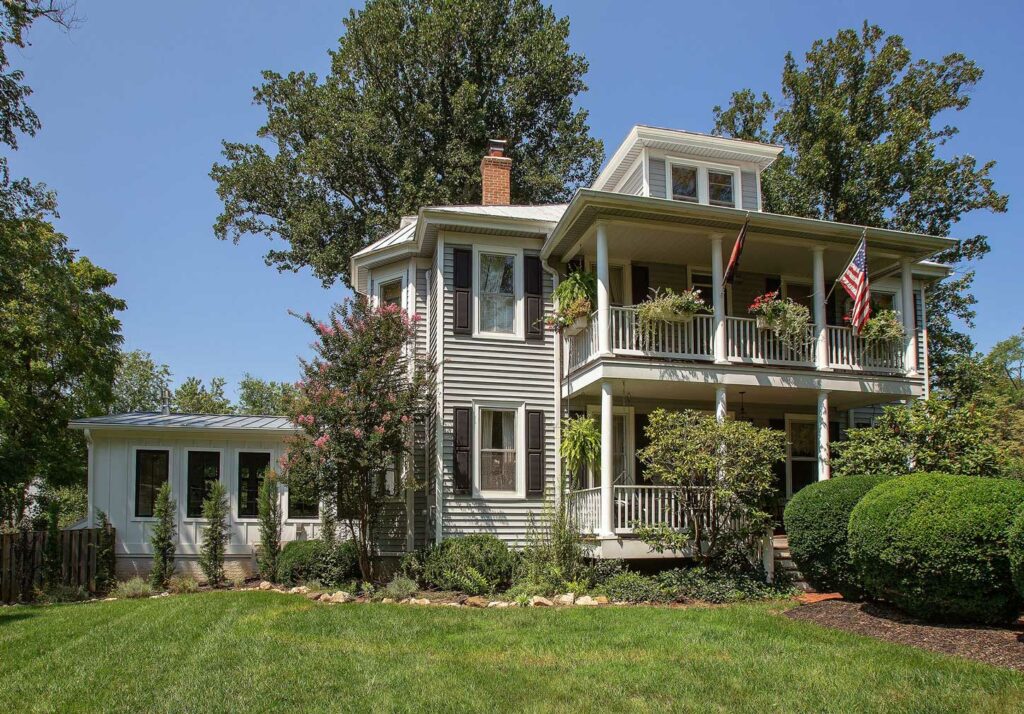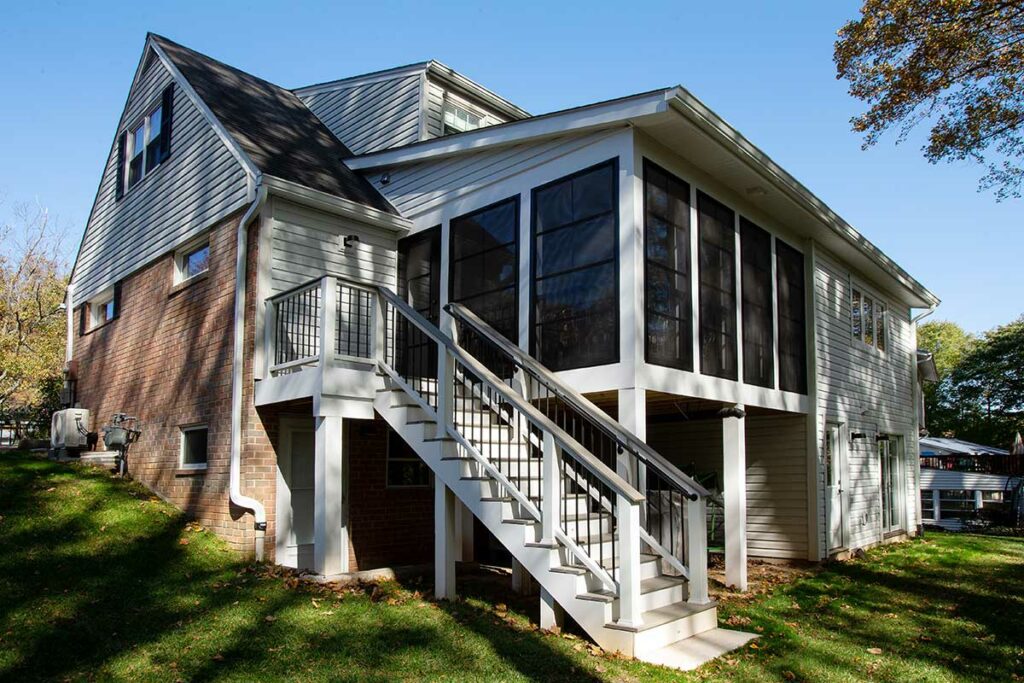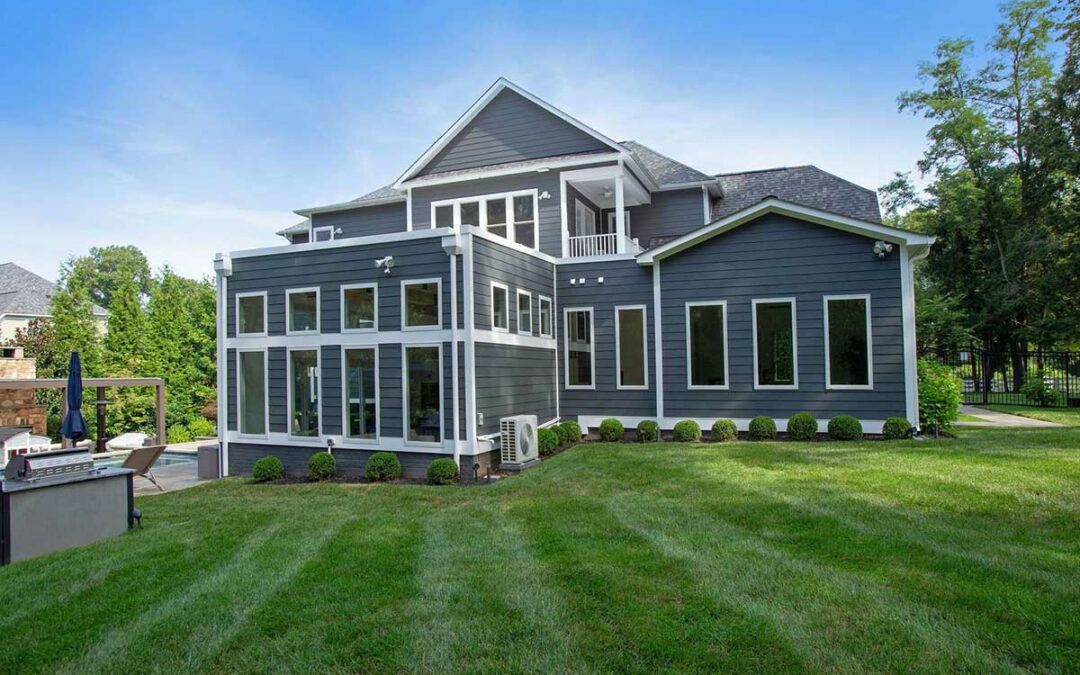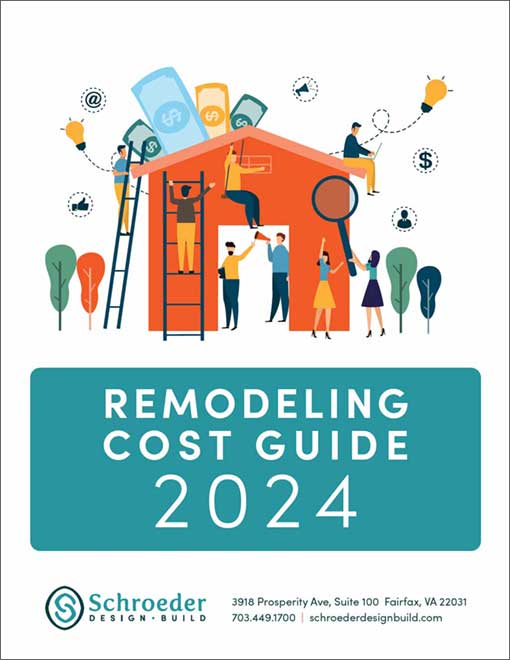The Cost of a Home Addition in Northern Virginia
In this post, we’ll look at one of the most common concerns when it comes to home additions: cost. Adding extra living space to your home is exciting, but it is essential to have a clear understanding of the financial considerations involved, especially in Northern Virginia, with its diverse housing market and specific regional factors. Read on to explore the factors that can influence the cost of a home addition in our region.
What Does a Typical Addition Cost in Northern Virginia?
On average, a basic home addition, with no plumbing and only slight structural work, can cost about $400 to $500 per square foot. For further breakdowns, Remodeling’s 2023 Cost vs. Value Report for the Washington DC region helps us narrow down average costs for a range of addition types. Here’s what you might expect for these types of additions:
- Sunroom Addition – $100,000 to $200,000
- Great Room Addition – $100,000 to $200,000
- Primary Suite Addition – $150,000 to $250,000
- In-law Suite Addition – $175,000 to $275,000
- Two-story home addition – $250,000 to $500,000
- Two-bay Garage Addition – $100,000 to $150,000
- Pop the Top or “Pop Top” – $250,000 to $500,000
Factors that Affect Addition Costs

When considering a home addition, understanding the various factors that can be involved will give you a better understanding of the potential costs so you can make informed decisions and plan your budget effectively.
Size
An addition’s size can influence the amount of materials, labor and time to complete, so it makes sense that a larger addition will require more. A larger addition also means more square footage to heat, cool and maintain, which can affect long-term costs.
Complexity
Complex designs, intricate architectural details, or unique structural requirements may require specialized expertise and additional time to execute. This can result in higher construction costs compared to a more straightforward and standardized design.
Foundation
The type of foundation needed for your home addition can also influence the overall cost. Different foundation types, such as slab-on-grade, crawl space, or full basement, have varying material and labor requirements. The complexity of excavation and site preparation can also affect the cost of the foundation.
Exterior Materials
The quality of the exterior materials you choose for your addition can significantly impact the cost. Premium materials, such as high-end siding or stone veneer, will generally be more expensive than basic or mid-range options. It’s important to consider the durability, maintenance requirements, and aesthetic appeal of the exterior materials when making your selection.
Number of Stories
The number of stories in your home addition can affect the cost as well. Adding a second or third story involves additional structural considerations, such as supporting the weight of the new floors and ensuring proper integration with the existing structure. This complexity can lead to increased costs compared to a single-story addition.
Number of Windows
The number of windows not only contributes to the aesthetic appeal and natural light of the space but also affects energy efficiency. The size, style, and quality of windows can vary significantly in price, and adding more windows will increase both material and labor costs.
Roof Style
Complex roof designs, such as multiple gables, dormers, or intricate slopes, require more labor and expertise to construct. Additionally, certain roofing materials, such as slate or clay tiles, can be more expensive than traditional asphalt shingles.
Style and Level of Interior Finishes
The style and level of interior finishes selected for your addition can have a notable impact on the cost. Factors such as flooring, cabinetry, countertops, fixtures, and lighting all contribute to the overall budget. Higher-end finishes and custom details will generally come with a higher price tag compared to more basic or standardized options.
Your Energy Efficiency Goals
Lastly, a homeowner’s energy efficiency goals can affect the cost of a home addition. Incorporating energy-efficient features such as insulation, high-performance windows, efficient HVAC systems and renewable energy technologies will often require an upfront investment. However, these features can provide long-term savings by reducing energy consumption and utility bills.
Home Addition Costs vs. Benefits

There are expenses and disruptions with any construction, however, a home addition offers numerous long-term benefits that can easily outweigh the costs.
Costs
- Materials, labor and permits. These are the tangible expenses directly associated with the construction process.
- Potential increase in property taxes. Adding square footage to your home can increase its assessed value, resulting in higher property tax payments.
- Temporary disruption to your daily life. Depending on the project’s scale, you may need to temporarily relocate, adjust your routines, or deal with noise and dust.
- Maintenance and utilities. With a larger home or added features, maintenance and utility costs may also rise.
- Adding square footage or valuable features may require adjustments to your insurance coverage and potentially, higher premiums.
Benefits
- Increased living space. As families grow or lifestyle needs change, additional square footage is important. A well-planned addition can provide the extra room needed for expanding families, guests, a home office, or hobbies and passions.
- Improved flow. With a carefully-designed layout, the addition integrates with existing spaces to create a seamless transition and better use of the home’s overall footprint, leading to improved traffic flow, efficient use of space and better organization.
- You have the freedom to tailor your space to your unique preferences and needs.
- Increased property value. A larger living space and/or more desirable features can make your home more attractive to potential buyers.
- Alternative to moving. Instead of uprooting your family, finding a new neighborhood and adjusting to a new community, a home addition allows you to stay in a location you already know and love while still meeting your changing needs.
Value in Working with a Design-Build Remodeling Firm
When undertaking a home addition project, working with a design-build remodeling firm can provide significant value and streamline the entire process by combining architectural design, construction expertise and project management under one roof. This means that the communication and coordination between the design and construction teams is greatly simplified and there is a seamless flow of information, along with a shared understanding of the project vision. Potential miscommunication and the likelihood of costly errors or delays are greatly reduced or eliminated.
Homeowners enjoy a single point of contact throughout the entire project and can rely on their project manager to oversee every aspect of the addition from concept to final construction. A design-build firm’s experience with cost-effective materials and construction methods, and energy-efficient options, along with expert advice that can help homeowners make informed decisions that align with their budget.
For More about the Cost of a Home Addition in Northern Virginia, Contact Schroeder Design Build
Working with Schroeder Design Build offers an exceptional experience for Northern Virginia homeowners planning a home addition project. With benefits ranging from their comprehensive approach to their team of skilled professionals, you can rest assured that your home addition will meet all necessary requirements, preventing potential delays or compliance issues down the line.
Whether you’re considering a sunroom, a new primary suite, or an entirely new level, working with Schroeder Design Build ensures a smooth, personalized and successful remodeling experience. For home additions, contact us.


